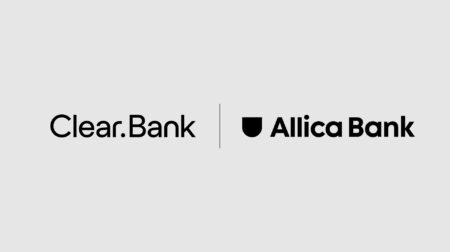Digital assets: what are they, and how are they converging with traditional finance?

With shifting consumer behaviours, technological advancements, and emerging regulatory regimes, digital assets are increasingly popular as a store of value and alternative payment method. The convergence of digital assets into traditional finance is driving demand for new services, leading firms, including PayPal and Block, to offer users a payments ecosystem combining fiat currencies and cryptocurrencies to allow easy conversion between the two.
With that in mind, in this blog post, I’ll examine the different digital asset types and the role they may play in the payments mix, before considering how digital asset platforms and banks can collaborate to accelerate the acceptance and adoption of digital currencies.
The most well-known digital assets are cryptocurrencies (often shortened to simply ‘crypto’), a digital currency underpinned by cryptographic systems to enable secure online payments without intermediaries.
The first and most well-known cryptocurrency was Bitcoin (BTC), created by Satoshi Nakamoto, a pseudonymous person or team who outlined the technology in a 2008 white paper. It offers a simple concept: a form of digital money that allows for secure, online peer-to-peer transactions.
The defining feature of cryptocurrency is that these assets are generally not issued by any central authority, rendering them theoretically immune to government interference or manipulation. Advocates suggest these assets are more secure by design, offer greater portability and are more transparent. Unlike other payment types, the transactions cannot be reversed.
This has led to cryptocurrencies gaining popularity as an alternative to local currency in countries experiencing prolonged economic uncertainty and banking restrictions, such as Argentina and Turkey.
While the adoption of cryptocurrencies is growing, their price volatility can be seen as problematic. Cryptocurrency can fluctuate 5-10% per day, compared to major fiat currencies, which fluctuate less, typically up to 1% per day. This volatility offers great arbitrage opportunities for traders that, in turn, can trigger further price fluctuations, when their value can rise or fall dramatically in the space of a few hours, it can undermine the utility of cryptocurrencies as a store of value or medium of exchange.
One potential solution to the issues outlined above are stablecoins, combining the digitally native nature of cryptocurrencies without, in theory, the same levels of volatility. Stablecoins are pegged to a fiat currency, commodity or financial instrument (including another cryptocurrency) with the goal of maintaining a relatively stable value over time.
Generally, stablecoins fall into the following categories:
- Collateral-backed stablecoins: also referred to as off-chain stablecoins because they derive their value from outside the blockchain. With collateral-backed stablecoins, cash or asset reserves act as collateral to prove that each coin is backed by its equivalent amount. They make it easier for users to make direct trades between fiat currency and tokens equally valuable to that fiat currency. For example, the largest stablecoins in terms of trading volume and market capitalisation are Tether (USDT) and Circle’s USD Coin, backed by collateral to the US dollar. If the value of the dollar changes (in terms of its purchasing power), then the value of the coin changes along with it. Therefore, the price of a fiat-backed stablecoin is guaranteed to align with its fiat target so long as the company behind the stablecoin is appropriately managing its coin supply and cash reserves.
- Crypto-backed stablecoins: also referred to as on-chain stablecoins, where cryptocurrency reserves function as collateral to ensure a stablecoin maintains a one-to-one value with an asset. Most of these stablecoins are also pegged to the value of the US dollar. However, the collateral used to obtain the stablecoin does not have equal value to the dollar. Any price instability in the collateral impacts how much a user receives when they convert it back to dollars via a fiat off-ramp – as noted above – the value of that cryptocurrency can move significantly.
- Algorithmic stablecoins: an algorithm maintains the peg between a stablecoin and an asset. If the stablecoin price begins falling beneath its peg, the system will reduce (burn) the supply of tokens in circulation, thereby increasing demand for the remaining coins. However, if the stablecoin’s price climbs above its peg, the algorithm will release (mint) further tokens into circulation, effectively devaluing each coin. Rather than maintaining reserves to guarantee their price, these assets rely on the ability of the algorithm to respond accurately to changing market conditions and not be open to any manipulation. Terra (UST) is a well-known example of this asset type ‘breaking its peg’, where its value fell below a one-to-one ratio with its associated asset.
Stablecoins have been foundational to developing another digital asset, central bank digital currencies (CBDCs). CBDCs are digital money that central banks can issue alongside existing fiat assets.
There are two types of CBDC currently under consideration:
- Wholesale CBDCs: these are intended for the settlement of interbank transfers and related wholesale transactions. They serve the same purpose as reserves held at the central bank but with additional functionality, for example, the conditionality of payments, where it would only settle if certain conditions were met.
- Retail CBDCs: two proposed variants are under consideration. One offers token-based access and anonymity in payments, giving individuals access based on a password-like digital signature using private-public key cryptography without requiring personal identification. The other approach is based on verifying a user’s identity and is rooted in a digital identity scheme while also looking to preserve privacy, as personal transaction data could be shielded from commercial parties and public authorities.
A lot remains unclear around CBDCs, and we are still at the proof-of-concept stage, as typified by the Bank of England’s Project Rosalind performed in collaboration with the Bank for International Settlements (BIS). There are concerns that the overall case for CBDCs remains unproven, with use cases difficult to justify given the cost and resources required to introduce the new infrastructure compared to the projected cost and efficiency benefits. Central banks in some nations, such as Canada, have concluded that there isn’t currently a strong case for digital currency.
We recently discussed the issues of efficiency, security and public concerns around privacy in depth at our digital assets briefing, which you can read more about here.
There’s no consensus on which new form of digital money will emerge as the predominant asset. It may well be a mix of what we have today and something that doesn’t yet exist.
Regardless – following several high-profile scandals – digital asset platforms must work hard to build public trust and differentiate themselves to appeal to the crypto-curious. Partnering with banks is a great way to do this. The banks, in turn, can learn firsthand how these platforms operate, the assets they offer and how those assets are used.
Collaboration between digital asset platforms and banks is critical to integrating digital assets into the financial system. Although many digital assets are essentially their own closed-loop ecosystems, accessing them requires the support of banking infrastructure. For instance, so-called ‘fiat on and off ramps’ allow consumers to switch between digital and conventional currencies easily. They’re becoming increasingly important as the adoption of digital assets increases.
Moreover, with the backing of a bank, digital asset platforms can move beyond agency banking and towards a true BaaS offering, providing end-users with a safe, secure and FSCS-protected platform. This gives them the ‘look and feel’ of a traditional banking partner and thus elevates the provider to become an integral part of our mainstream financial system.
ClearBank is leading the charge, working with regulated, secure and reputable firms in the digital asset space, facilitating real-time, scalable accounts that seamlessly clear transactions on and off ramp between fiat and crypto.
For digital assets to be successfully immersed into the mainstream financial landscape, banks must support digital asset platforms to interpret regulation and remain compliant while collaborating to develop best practices. Regulators, central banks, and private market participants like ClearBank are currently working to enhance interoperability, identify commercial opportunities for financial intermediaries, and spot the best use cases for consumers to accelerate the adoption of digital assets.
Learn more about how ClearBank is powering the fiat leg of the digital asset payment journey.
Andrew Delves is Head of Crypto and Digital Assets at ClearBank.


